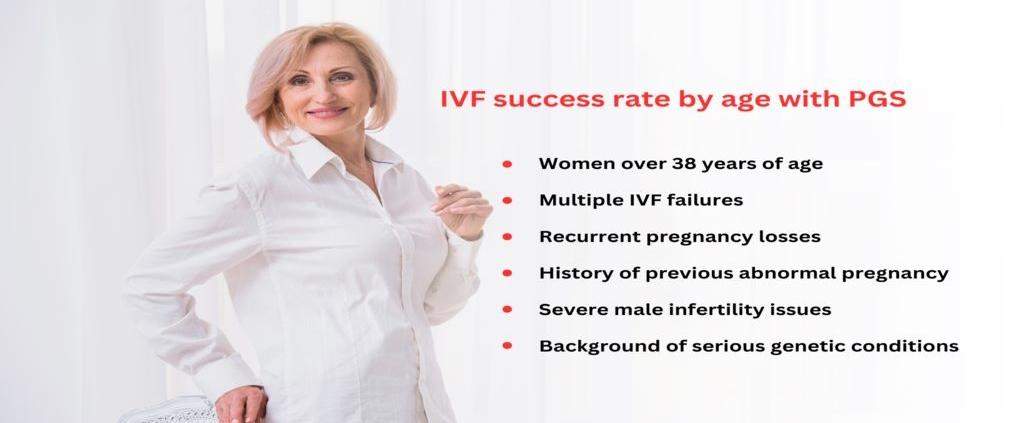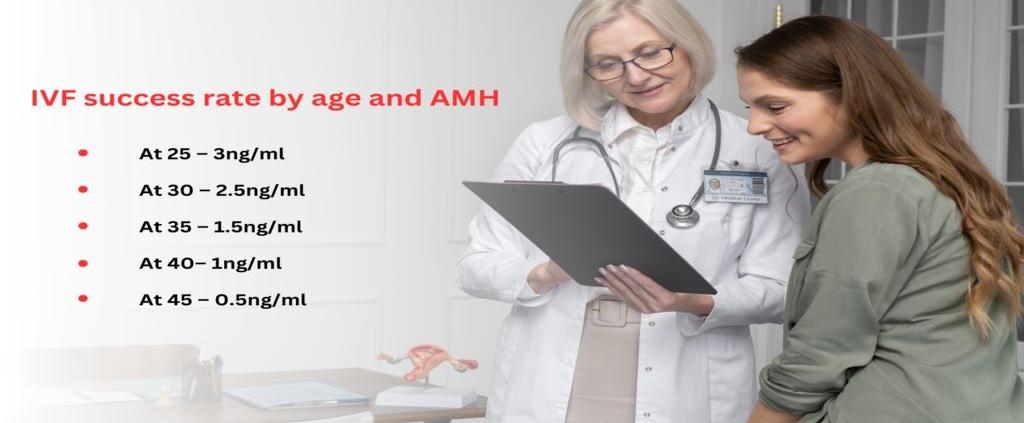Sperm Morphology
Your semen analysis reports indicate sperm morphology normal range– of 2%. Chances are you have no clue about what this 2% stands for. And sperm morphology treatment might be a ghost term for you. You are eager to know if this means you are infertile or if there are other concerning issues. Is it possible to figure out what the term ‘sperm morphology’ implies so that you don’t have to go and see a doctor?
Imprimis IVF, Srinagar, will help you navigate sperm morphology treatment and the associated problems, if any.
What is Sperm Morphology
Morphology is a biological term that studies the form and structure of a living organism or any of its body parts. So, when we are using this term with sperm in simple words, we can say that sperm morphology is the study of the form and structure of sperm, i.e. its shape and size.
Every part of your body has a specific shape to perform particular functions. For instance, your blood vessels are designed to have a tube-like shape. And their primary function is to carry or supply oxygen and nutrients to various organs of your body. For some reason, if the condition of your blood vessels gets deformed or there is a blockage in any of the blood vessels, it will lead to severe problems. It will disrupt the whole process of blood circulation.
The same is true for your sperm. Your sperm must be of a specific shape and size. If there is any deformity, it is bound to create difficulties in getting pregnant.
Sperm Morphology Normal Range
The sperm cell is produced in your testes. A sperm has three parts: head, midpiece, and tail.
If all the parts of a sperm cell are of standard shape and size, then it is known as normal sperm morphology. A typically shaped sperm cell has the following dimensions and functions:
- Head-: The head of the sperm cell has a smooth oval shape with a pointed front end. The nucleus that carries the DNA of the sperm cell is present in the head.
A normal-shaped sperm is 5-6 micrometres long and 2.5-3.5 micrometres wide.
- Acrosome cap-: Acrosome cap makes up nearly 40-70% of the sperm’s head.
A protective membrane surrounds the egg produced by the ovaries. The sperm cell has to penetrate through this membrane to reach the egg for fertilization. The well-pointed acrosome cap is used for this purpose.
- Midpiece-: The midpiece of the sperm cell is thinner than its head and provides it with energy to swim.
- Tail-: Ideally, the tail is around 45-50 micrometres long. It’s thinner than the other two parts of the sperm cell.
The sperm has to swim through the uterus to fuse with the egg to fertilize it. The tail of the sperm helps it to swim through the uterus.
Apart from this, the head of a customarily shaped sperm should not contain large fluid-filled drops or vacuoles.
Which factors determine Normal Sperm Morphology?
The male hormone, testosterone, is responsible for regulating the production of sperm. It might surprise you, but the male reproductive system also produces the hormone estrogen.
For sperm to have a normal sperm morphology, there must be a proper balance between the production of these two hormones. If this balance is disturbed for any reason, it will hinder the process of sperm formation.
This process of sperm formation occurs at its own natural pace. It takes about 65-90 days for a sperm to be formed. It starts with a single round-shaped cell that slowly grows into the sperm we see in the diagram.
Optimum testosterone levels ensure that as the sperm cell grows, each part, i.e. the head, midsection, and tail, have the proper shape and size. It is due to poor levels of testosterone that result in abnormal shape and size of the sperm cell. Abnormal sperm morphology or teratozoospermia refers to abnormalities or defects in the form and dimensions of the head, midsection, or tail.
Abnormal sperm morphology is characterized either by head defects, midsection defects, tail defects, or in some cases; the sperm is acrosomeless.
It has the following defective characteristics:
- Two heads or two tails
- An elongated and deformed head
- A rough head
- The bent, asymmetrical, or irregular midpiece
- Bent, short or coiled tail
- Vacuolated head
These are some of the abnormalities that occur in a sperm cell.
You must be wondering, is abnormal sperm morphology a matter of concern? Data shows that typically 30-40% of a man’s sperm have abnormal morphology. The problem in conceiving starts when most sperm are abnormally shaped.
You have a normal sperm morphology if your semen sample has 4-14% usually shaped sperm. This range is defined under Kruger’s criteria. However, if it falls to less than 4%, you have a low sperm morphology.
You must note that abnormal sperm morphology is not a parameter that indicates infertility. It simply represents the concentration of typically shaped sperm in your semen sample.
Factors leading to Abnormal Sperm Morphology
- Age-:. Sperm morphology deteriorates with your age. The testosterone levels decrease, leading to a decrease in sperm morphology.
- Obesity-: As we know, testosterone is responsible for the production of sperm. For sperm to have a normal sperm morphology, the testes must produce an optimum testosterone level.
If you are obese, then your body produces estrogen in high amounts. It leads to the underproduction of testosterone. And it further affects your sperm morphology.
- Stressful regime-: If you have a stressful regime, then the amount of stress hormones in your body increases and adversely affects testosterone production. It further reduces your sperm morphology.
- Smoking and drinking alcohol-: Excessive consumption of alcohol and tobacco can negatively impact the shape and size of your sperm.
- Drugs and steroids-: Drugs like cocaine, marijuana, etc., affect your sperm morphology adversely.
- Diabetes-: If you have diabetes, you are at a higher risk of abnormal sperm morphology.
Sperm abnormalities like double heads and round and elongated spermatids are more prevalent.
- Genetics-: Heredity plays a role in deciding sperm morphology in a male. The family history of teratozoospermia is likely to be inherited genetically.
- Exposure to chemicals-: If you come in close contact with herbicides, pesticides, paints, organic compounds like benzene, and heavy metals like lead, you may have a large number of abnormal sperms.
Abnormal Sperm Morphology Treatment
Sperm morphology treatment starts with a semen analysis. Before concluding anything, it’s advised to go for multiple semen analysis tests from top-notch laboratories to ensure maximum accuracy.
Lifestyle changes that can help boost morphology sperm count
Surgery is not the only option to improve sperm morphology. You can enhance sperm morphology treatment by making small and simple changes in your day-to-day life.
- Lose the extra weight-: If you are obese, you must manage your weight to improve your sperm morphology. Maintaining a healthy Body Mass Index will ensure good levels of testosterone.
- Bid goodbye to recreational drugs-: Any drugs should be avoided to improve sperm morphology.
- Go for loose clothing-: Testes function at a proper temperature. A tight dress can hamper sperm production by increasing the temperature of the testes. I prefer wearing comfortable and breathable cotton underwear for healthy and normal sperm production.
- Keep your alcohol and tobacco intake under control-: Yes, you need to limit your alcohol and tobacco consumption if you desire to improve sperm morphology.
- Consult a trusted fertility specialist-: People often skip consulting a specialist and start taking medicines blindly without knowing the root cause that needs diagnosis. Reaching out to a good clinic like Imprimis IVF, the best Infertility treatment centre in Srinagar proves beneficial.
As already stated, sperm production takes around 65-90 days. Maintaining a healthy lifestyle for 3-6 months is essential to gather positive results.
Data shows that 90% of the time, You can improve sperm morphology with these simple lifestyle changes. The remaining 10% of cases can rely on treatment options to improve sperm morphology.
Treatments for Poor Sperm Morphology
Certain Assisted Reproductive Technology methods have helped men with abnormal sperm morphology. The most promising and trusted ART treatment methods include:
- IUI-: IUI, which stands for Intrauterine Insemination, has helped tackle abnormal sperm count in men with high sperm count and sperm motility.
IUI treatment is cost-effective because a washed or processed sperm is injected directly into the uterus.
- ICSI-IVF-: If the sperm count, as well as motility, is low, then in-vitro fertilization with ICSI can help you conceive if you have abnormal sperm morphology.
In ICSI treatment, the egg is fertilized with the help of a single sperm cell. After getting fertilized, this egg is then implanted in the uterine lining.
This method has summoned encouraging results when sperm morphology is as low as 2%.
Final Words
The test results of semen analysis can spark many questions about abnormal sperm morphology treatment. There’s no need to stress about this unknown term sperm morphology. Remember that stress plays a crucial role in the process of sperm production. So it would be best if you keep stress at bay. Consult a reproductive specialist if you cannot stop worrying about the complications of abnormal sperm morphology. Follow a healthy and stress-free lifestyle. It will not only help improve sperm morphology but also help you stay fit in the long run.





